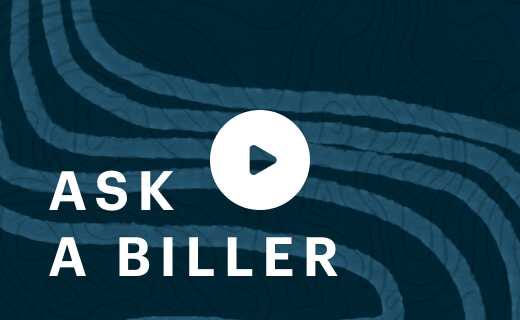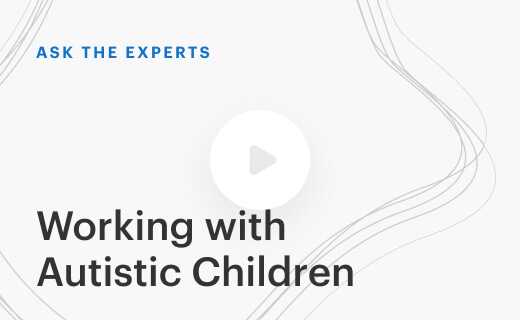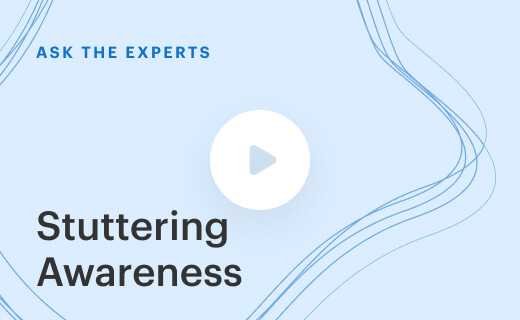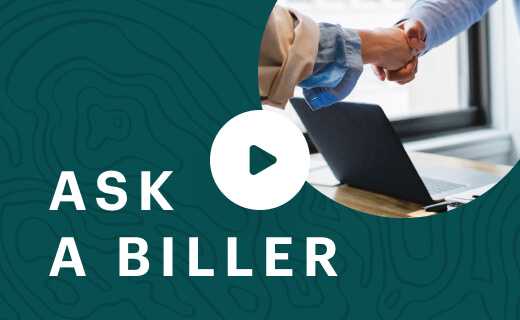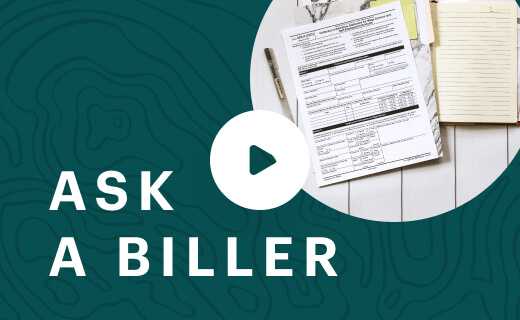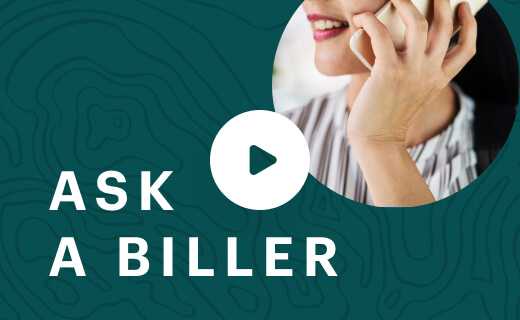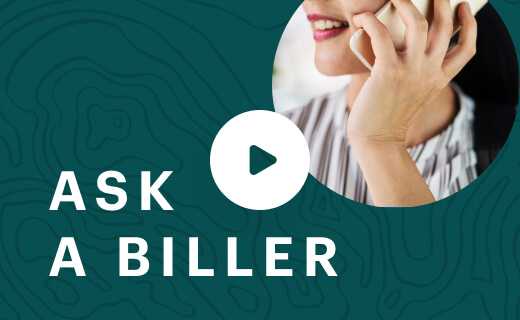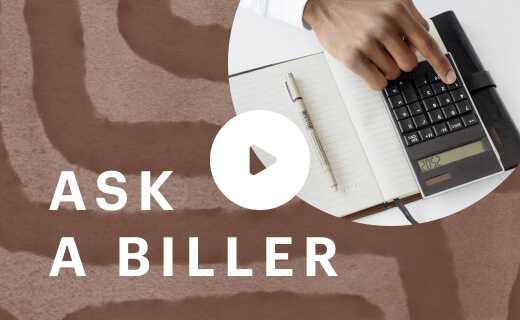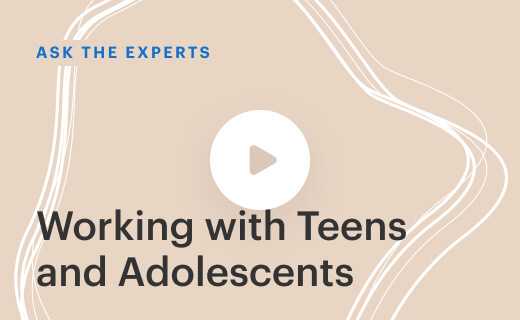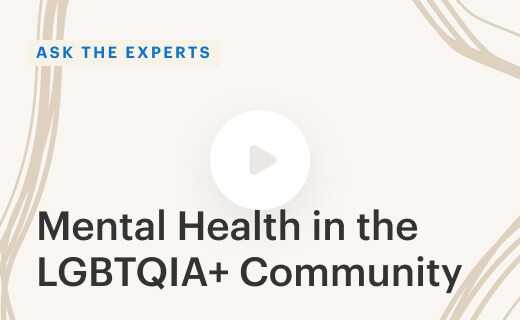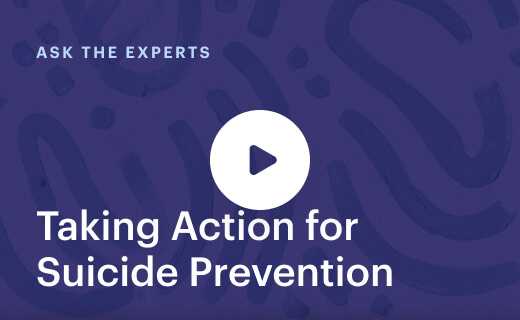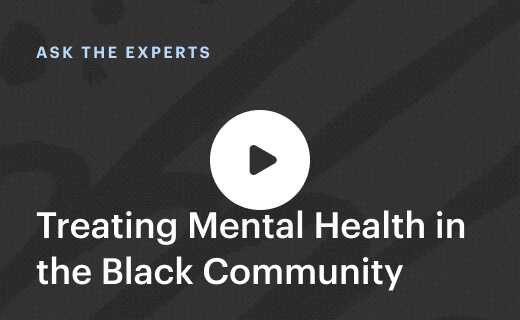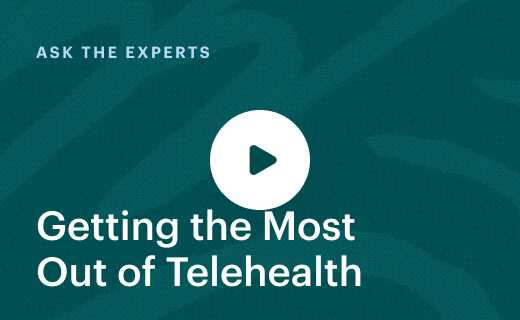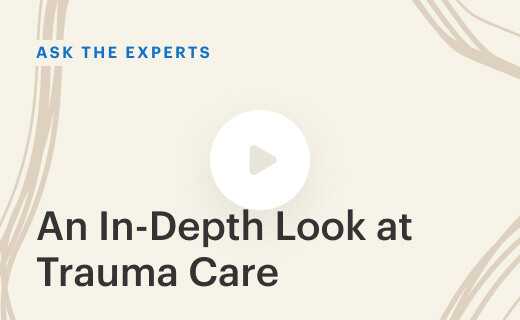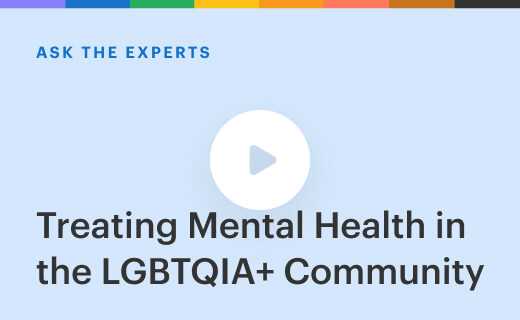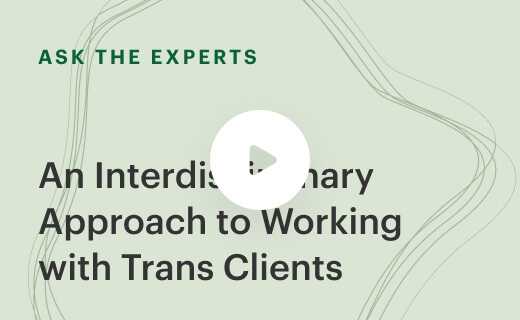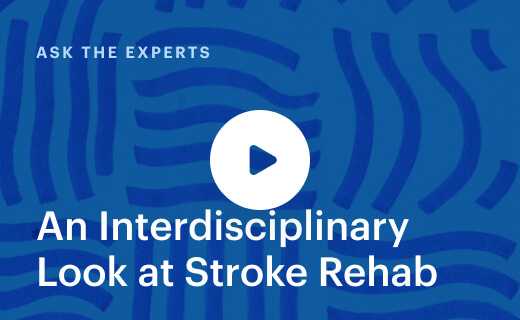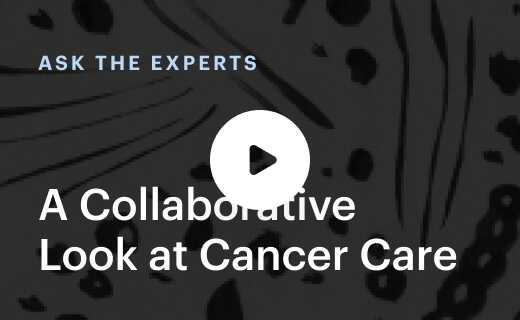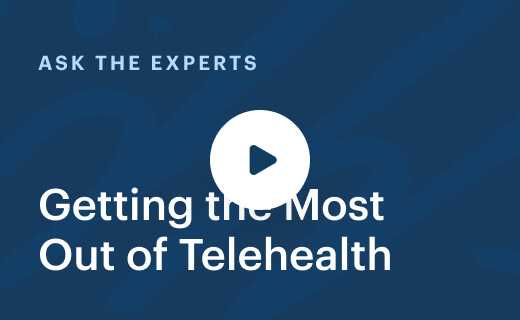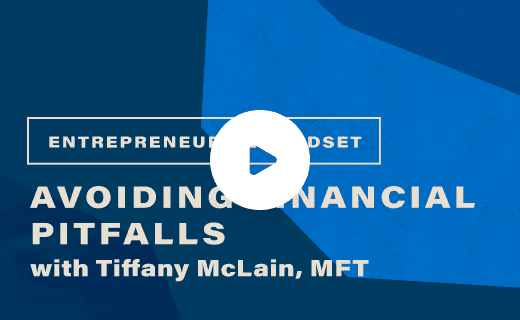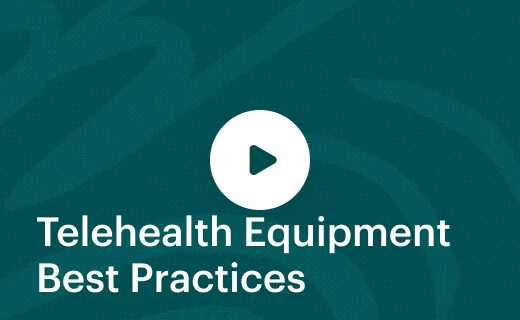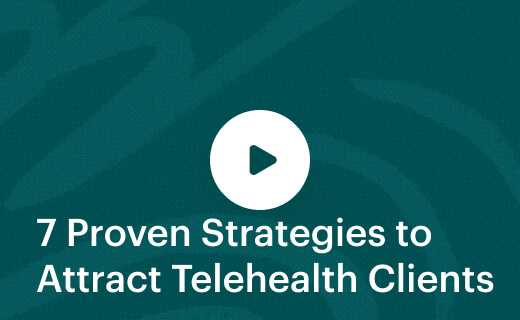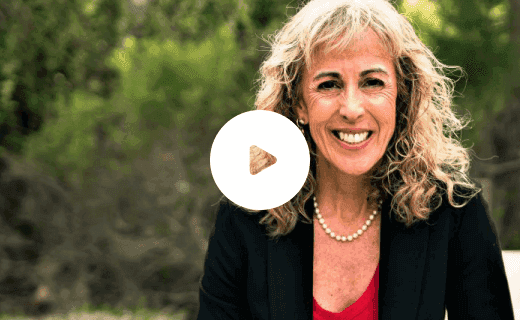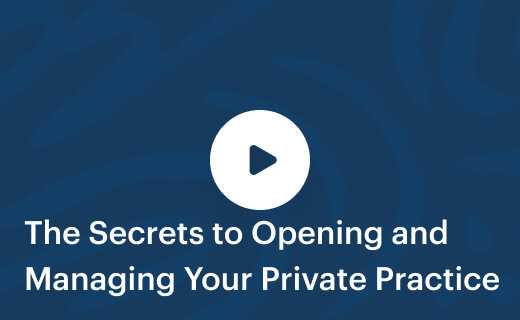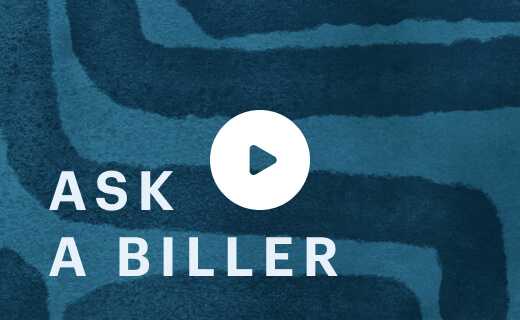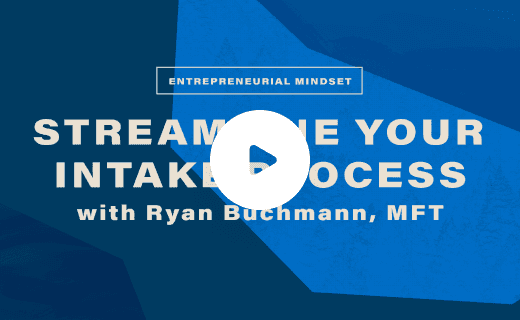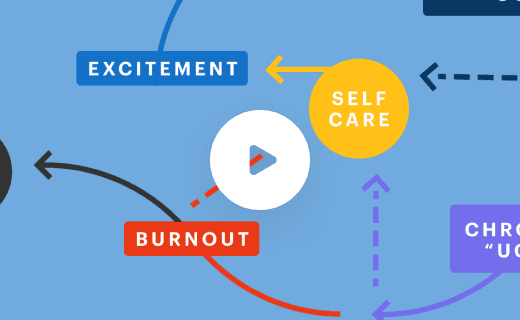Treating Mental Health in the Black Community
Free 30-day trial, access all this & more:
Want to know about other great webinars?
Dr. Ben Caldwell is joined by mental health professionals Donna Oriowo, PhD, LICSW, Shawan Worsely, PhD, LMFT, LPCC, and Michael Jones, EdS, LPC-S, to talk about what it means to treat mental health in the black community.
In this webinar, each one of these experts offer some insight into their own experience, and what brought them to join this panel and speak about mental health in the black community. They discuss everything from what it means to hold space for clients who are dealing with oppression due to their sexuality, to best practices on how to balance being a therapist and an activist.
In addition, they offer advice on how you can better support the black community, and what it means to take a stand and do something that will make a difference. No matter what color you are, this panel of experts invites you to learn about treating mental health in the black community, and how you can better support black clinicians and black clients today.
- Introductions
- What is the most important clinical mental health issue that needs more research and attention in the black community?
- How do I continue to support my clients and encourage them when I myself lose faith from time to time?
- How do you help clients deal with race-related stress and anxiety?
- How do you address systemic racism in therapy?
- What are some ways that you have found to work with and undo internalized racism?
- How do you approach and communicate about events surrounding George Floyd’s death with teenagers?
- How can I make my website copy, feel more welcoming to people of color?
- What resources do you recommend to continue this work on our own and continue to become better clinicians for black Americans?
- How do we get more black clinicians into the field? How do we even begin to rewrite or rebuild the DSM?
- How do we bring more black voices into the conversation? How do we bring more black clinicians into mental health work?
- How are you holding space for individuals in the black, queer, and trans community who feel oppressed by their heteronormative black community?
- I’m having trouble finding where my therapist role ends and my activist role begins. I get frustrated with clients who are not aware of the racism that they appear to be expressing. Should I channel my frustration into passionate education?
- Is there anything else that you wanted to say that you didn’t get a chance to say during our conversation so far that you want to make sure it gets said out loud before we wrap it up?
1. Introductions
Ben Caldwell: Good afternoon, everyone. I want to welcome you to today’s webinar on treating mental health in the black community. We’ve got some wonderful panelists here with us this afternoon. This is going to be a very worthwhile next hour and a half.
A couple of administrative notes before we get started. My name is Ben Caldwell. I’m the Education Director here for SimplePractice Learning. We’ve gotten a number of people asking about recordings of today’s event. Everyone who is registered for this webinar will receive a recording of the full event by tomorrow. You’ll receive it by email, so make sure to keep an eye on the same email address that you use when registering for this event.
Secondly, we’re spending some of our time today on questions that participants submitted when they were registering, but we’ll have about a half hour at the end for questions that have been submitted while we’re having the discussion here live. If you’d like to submit a question, please use the questions panel in that ‘Go to Webinar’ control panel. We’re not going to be able to get to everything, but we’ll get to certainly as many as we can.
This is our rough schedule for the day. We’ll do a few minutes here on introductions first for roughly an hour, give or take. We’ll answer some pre-submitted questions. We’ll use our remaining time for live Q&A. We’re scheduled to go until 1:30 Pacific Time today. That’s 4:30 Eastern, if my math is correct, and we will fill that time, I have no doubt.
On that note, I’d like to introduce our panelists, starting with Shawan Worsley. Shawan would like to talk a little bit about yourself and your practice?
Shawan Worsley: Sure. So, I am a therapist and an educator in California in the Bay Area, right outside of Oakland. I work primarily with people of color, doing cultural responsive counseling, and I’m also an educator, and my work surrounds issues of social identity and mental health disparities and working to eliminate them.
Ben Caldwell: Thank you very much. And thank you, I want to just point out Shawan was the one who sort of pitched this to us. We were talking about some things that we can do for SimplePractice Learning and CE, and she suggested that we do a live event like this one. So Shawan, many thanks for that. Our next panelist is Michael Jones. Michael, do you want to talk about your work?
Michael Jones: My name is Michael Jones. I am in a private practice near Little Rock, Arkansas. I’m also a counselor-educator, and then been doing that for a few years now. My main focus and specialty areas include social justice issues, also multicultural issues, and also telemental health counseling. And I’m just very excited to be a part of this panel today.
Ben Caldwell: Thank you very much. And then finally we have Dr. Donna Oriowo. Donna, would you like to talk a little bit about your work?
Donna Oriowo: Hey, I’m Donna Oriowo. I’m a sex and relationship therapist located in the Washington DC area with a specialty in how colorism and texturism impact mental and sexual health. That’s pretty much the long and short of it.
Ben Caldwell: Thank you very much. I mentioned that I’m Ben Caldwell, the Education Director here for SimplePractice Learning, and for anybody who is wondering, “Hey, SimplePractice, what are you doing having a white guy facilitate this conversation?” We actually had a fair amount of conversation about that very issue internally, and where we landed was that number one, black mental health is not solely a black issue. We didn’t want to present it that way. And number two, it is not just possible, but necessary for white clinicians to show up to conversations like this and not center their own experience. So my intention here is to be kind of a, an example of what that looks like.
We also were talking with our panelists here yesterday about intentions for the day. So I think it’s helpful to visit that quickly and talk about kind of, cause I know each one of you has very different experience, very different maybe goals and motivations for being here today. So I wonder if each of you could spend a minute, maybe talk about that. What is it that kind of led you to be here today, and what are you hoping for in the next 90 minutes? And Shawan, I’ll start with you.
Shawan Worsley: So I’m here today because I believe we’re in a particular moment in time. Black people have lost their lives, and because of the situation that has happened with George Floyd and all of the activism and agitation around what’s been going on that we are in a moment where people are listening. And I think that change is crucial and that we all have to play our part. And I am grateful to SimplePractice for doing this because I think it is a space for sharing. I think it’s a space for educating, for empowering, and equipping. And my goal here is to help to just improve the field, which I think has poorly served black people, and to help to equip clinicians to better serve our communities.
Ben Caldwell: Thanks. Michael, what about you?
Michael Jones: My main reason for being here today; these conversations that we’re having today is a conversation I know that many of us have been having for multiple years in different venues, whether it’s with students or with other clinicians or just with family members in general. And so I feel like this will be a great opportunity for us to be able to speak and for people to be able to get some varied experiences from each of us about how we’ve experienced these things and how our clients have experienced these things and how we can work together to bring it into all of this.
I think that’s the hope, that’s what my goal is that when we walk away from our time together today is that we have some strategies and things that we can put into action immediately because I know answering questions on an individual basis to individuals about race and microaggressions and owners of things like that, it gets tiring doing that on an individual basis on every single day. And so whenever you have opportunity to be able to be in front of many people, to be able to have that message put out one time so they can hear that, I just felt like it would be a good time to be able to do that. And so I thank SimplePractice for putting this together and just giving us opportunity to be able to have our voices be heard as we speak for those people who don’t have a voice.
Ben Caldwell: Thank you. Donna.
Donna Oriowo: I already facilitate these conversations, and specifically in the field of sexuality. I serve as the chair of the Diversity, Equity, and Inclusion Committee for AASECT, the certifying body for sex therapists. I am also incoming as a communications chair, so I’m not a stranger to having these conversations within that space and within that field. And a lot of people don’t think that race has anything to do with sexuality, but in the field of mental health, I don’t see a lot of these conversations happening, not in productive ways, certainly. So part of my motivation for being here is that I am tired. Specifically, I’m tired of people acting like racism started two weeks ago, as opposed to many, many years ago, hundreds of years ago. So I think that now was the moment to just have the conversation, have it out, let people ask their questions.
You have three very different people on this very panel. I mean, not just different in the sense of our geographical location, but also what it is that we focus in on. I think that will offer some level of- it will give great start to the conversation here, especially for those who are entering this type of conversation for the first time or who are not used to having these types of conversations. I think that this type of dialogue is necessary, and I figure if SimplePractice is willing to be a platform to allow that conversation to happen, then I’m willing to be here to have that conversation.
Ben Caldwell: Well, thank you. We’re certainly very grateful to each one of you for being here, and it’s our hope that- you all have very wide reaching areas of experience and expertise, different perspectives, and so this should be, I think, a really interesting conversation, just to hear different perspectives on some of the questions that we have in front of us today. With that, let me get to our first question, which comes from Colleen, who asks “What is the most important clinical mental health issue that needs more research and attention in the black community?” Michael, I’ll start with you on this one, and then Donna, and then Shawan.
2. What is the most important clinical mental health issue that needs more research and attention in the black community?
Michael Jones: I think one of the most important clinical issues to think about is just understanding anger. I think when we have clients who are African-American, who come into our spaces that we have, and if they’re experiencing any type of anger that they are going through, to be able to understand where that anger is coming from and not react to it we normally do. I think when we see someone and if they’re frustrated or their passionate or whatever the case may be about something, there’s always this mentality of jumping to the conclusion that this is the angry black woman, angry black man, when in reality there’s a lot of things that have led up to that moment where that person is done and frustrated. And so I think that’s one mental health thing that it has to be talked about is that we don’t deal with anger from our black clients in the right manner. Because if I already have a sense of fear from that client, just in general, and now they show each type of anger, I think that complicates a problem in general for me to be able to work with that client.
So I think we have to be well aware of our own understanding of what anger looks like and how that’s going to be expressed. And I think that’s a big mental health concern, whether you can have them in a school setting where African-American students are punished three times more often for the exact same thing as their white counterparts are being dealt with. So that anger starts at a very, very young age, and so when we get to older age then that’s coming out. You need to understand where this is coming from and be able to be in a position to listen, to hear that. And so I think that’s one issue that’s not being dealt with in the right way.
Donna Oriowo: I really liked that answer. Go Michael. Mostly because anger is one of my favorite emotions, and I think that oftentimes it gets a really bad rap. But to answer this particular question, I think that there’s an assumption that there is not enough research out there. I think there’s plenty of research out there. I think it’s about how do we center the research that is already out there. I know many black people in this field and outside of this field who are doing great work, who have done wonderful research, but none of that stuff is actually being taken seriously or being put at the sensor and the way that it needs to be. So it makes it very difficult for us as clinicians or mental health experts to do any of this work, because we are unaware of what is already out there, or it has already been discounted as not being real research or being all that important.
So when we think about funding streams and where money goes and who get the money, what is considered important to even research in the first place, we’re already put at a disadvantage. I remember when I was doing my research on colorism and texturism. And for those who don’t know, colorism is discrimination based on someone’s skin tone, where lighter skin tones, or those who look white are seen and held in a higher regard than those with darker skin tones. Hair texture works in the same way, so the straighter the hair, the better off you’re set to be and the more privileges that you receive for that, having that right hair texture. And hair textures like mine are often admonished and told we’re supposed to do something differently in order to show up in the space. But when I was doing this research I was told, “Oh, there’s not going to be anything out there on that, and you should change what you’re going to study.”
I mean, people already are coming with an assumption about what is there and what’s not there. And I’m more concerned with what’s in the DSM versus what’s not in the DSM. Who gets to make the decision about what mental health issues are actually important in the black community and who are the purveyors and gatekeepers of knowledge? And how do we gate-keep against those people who do not have certain credentials, so classist, educationalists, and we have all these other isms sort of intersecting in this space, and we don’t allow black people to really story their own stuff. We sort of say that, “Oh, there’s not enough research,” and I’m just like, “No, there’s plenty of research, we just don’t use it.”
The sex educator in me will also say that I would want us to start from a sexuality perspective because we’re sexual beings from birth till death. So everything, including how we express anger, how we express any emotion, how we show up, how we dress, how we speak to other people is also based in our sex and our sexuality, and how people are going to accept or not accept it from us. And that is also going to change according to our skin tones, hair textures, et cetera.
Ben Caldwell: Thank you, Shawan.
Shawan Worsley: I think that a real concern in terms of working with the black community has two sides to it. One, I think that there is a real lack of understanding of the intersecting identities that people have, not just black people, right? That all people have, right. But if you’re talking about black people, how do we even understand who this person is, who is sitting in front of us? How do we approach that? And I think clinically, we are often not seeing clinicians who are equipped to even conceptualize black people in the fullness of their identity to approach it, to engage it, so that when things come up such as anger, like Michael said, or such as sexual identity, as Donna was saying, and as people are voicing their experiences and their identities, there really isn’t an appreciation for what’s happening or a sense of how do I deal with this? How do I talk about it? How do I broach it?
What if there is no box, right? What if we need 15 boxes or 30 boxes. Can you even tolerate that and fit that into the two lines on your assessment that asks you who this person is? So I think clinically as a field, there has to be a greater expansion of our understanding of who a person is. And then as we take that to dealing with black people, really exploding our idea of who is black and what is their experience, and then how do we work with each individual when they come into our office?
Ben Caldwell: Well, there’s a lot there, and I know we’ve got some other questions that are going to help kind of expand on that and what that really looks like in the therapy room.
Our next question comes from Davis, who asks, “How do I continue to support my clients and encourage them when I myself lose faith from time to time?” And Shawan, I want to start with you on this one. And then we’ll go to Donna and Michael.
3. How do I continue to support my clients and encourage them when I myself lose faith from time to time?
Shawan Worsley: I really appreciated this question because I think it was honest and real and speaks to just the challenging aspect of really doing this work. And for myself, I think that when I feel low, it’s really crucial for me to tap into my faith, my hope, to release what is not helpful, the negative, the frustration, and then to fill myself with what I believe and what I think can happen. As a clinician, I do believe in change. I do believe people can change. I do believe that things can become better. And I find that I have to truly walk my talk.
And when I had a client come to me and say, “I just don’t know, everything is so terrible, I’m scared to send my child outside.” And she knows I have two young boys, and I have experienced such intense fear, and I had to do something with that fear. And I explained to her the ways of which I have advocated the civil community service that I have done, the ways of which I engage. And she was able to hear that and say, “Okay, if you’re able to do that, then I’m able to do this.” So it was really about showing up and not saying, “I’ve got it all together,” or, “Everything is all good.” It’s about saying, “You know, I’m really afraid of my boys are going to die. And because I’m afraid of that, I can’t stand still. And so I’m going to fight and I’m not going to give up. And I’m going to do whatever to be done to try to make this world safer for them.”
And so even though I didn’t have the answers, and even though I couldn’t fix her problem, I think the fact that I was continuing to move forward, even in the midst of fear and uncertainty, encouraged her. And she went from that session to figuring out what she could do to continue to move forward. So I think we have to be honest, but I think we have to continue to walk no matter where we’re at.
Donna Oriowo: I feel like this is a question that sort of came up in therapy today, not three hours ago. And it ended up being that I asked my clients to think about lemons and lemonade. We were carrying on a conversation from last weekend. She’s talking about, “Yes, I’ll just take my lemons and make lemonade.” And I was like, “What’s wrong with lemons?” And to that I say, how do we sit with where we are? How do we take a look and go introspectively and just be in this moment and give space and breath to this moment?
There’s always something to do, but I’m like, there’s always time to sit, to be in the moment, to appreciate it for all that it is. I’m not saying appreciation as in “Oh, this is a wonderful moment,” but to really take a look around, to trying and understand the nuances that have come our way. And when we’re doing that work, and we’re being there with our clients, I feel like that allows us to get into a space of now, I know how I move because of this, this, and this about me; let’s talk about how you have historically moved with this, this, and this about you. And now where do you imagine the next steps are for you? But that’s after you’ve had and appreciated the fact that you have lemons. Because lemons to lemonade- if lemon is talking to the lemonade, the lemonade is nothing without those lemons.
So how do we look at what we’ve got right here right now, notice and appreciate it for what it is, and know that we are going to move forward because to not move forward is actually to been dead or something. So as long as we’re alive, we’re going to keep pushing. We’re going to keep moving. We’re going to keep doing. So appreciating the moment before we jump into the doing, being okay with like, “Yeah, right now I have lost faith. Things are not okay,” to mourn that, to be there, and then to move. I think that we can sometimes move very quickly into moving as opposed to learning how to be when we are human beings. We’re not human doings. So if can slow down and just be for a second and then move into doing something about what injustices and things that we see, I think that would serve us a little bit differently, and we’ll see our faith and not losing faith differently as well.
Michael Jones: I think it’s just a measure of transparency comes from us when we’re sitting with our clients. We have to be okay, and obvious not okay with the situation, but to be able to sit in that moment and also realize I have the choice to be able to step out of this when I feel like I need to do so. I think as a clinician, I need to do that certain times; I think I need to do that too. So if what they’re saying and what they’re hearing is becoming so overwhelming, yes, appreciate that to be able to understand where those things come up from. But also realize you don’t have to inundate yourself in all this right now, if you choose not to.
I think for some people, this is a time for them to stand up and speak and say a lot more things for the people. They are tired, and they want to take a step back from this moment. I think the one way I can encourage my clients is helping them to realize the choices they have, that you have the ability right now to step into this or step out, whatever works best for you at this time period, and not to feel bad about that. I think there’s some guilt sometimes that we will we’ll feel, well, I don’t feel like I’m doing enough. But if you’re not able to get along, then my thing is like, take the time that you need to do that. And be honest with our clients. You know, I think there can be a way of approaching our clients where we’re acting as if we’re not affected, and the reality is we are affected. We see the same things going on. We’re human being as we walked into the office, and they are too. So there’s that connection they’re looking for.
And I think it’s okay for us to be able to share how these things are affecting us and how we still want to be of assistance to them. But I think there is that part of, it’s okay to step away for the time that you need to take care of yourself during this time period, and we can talk about this today or we can come back to it next week when you want to, but it’s okay to have that, but to have that space that you need to be able to process through all those things. So I think as clinicians, even if we are losing faith in what’s going on, it’s okay for us to send that message, “You can unplug, you can back up if you need to, but when you’re ready to get back in there, I’m right here beside you at this time period.”
Ben Caldwell: Well, if you don’t mind my asking, and this is maybe kind of a personal question, so don’t, don’t feel any obligation to answer here if you don’t want to. But I’m curious because you’ve each talked about the importance of sort of recognizing and honoring that loss of faith that comes from time to time. And in the introductions, you all also talked about being tired and being tired of having some of these same conversations over and over, being tired of what you are encountering on a regular basis. I’m curious how each of you is doing in terms of the broad question of faith. How are you in terms of sitting with the idea of the possibility that what we see now may be transformative and it may not?
What we see now may be transformative and it may not. Where are you with that? How are you dealing? I mean, as mental health professionals, we have to believe that change is possible. Is that hard right now?
Michael Jones: I guess I’ll start. I do believe change is possible. I mean, what we’re seeing going on right now is not something that is in a bubble United States of America. This is something that’s going on worldwide. For me, that gives me some hope that the more people are talking about this, the less it can be ignored. I think that’s the problem, is anytime something is hard or difficult, it’s very easy for us to turn a blind eye and say, “Well, that doesn’t really affect me, so I don’t have to do that.” But there’s much that’s been going on over the past few years that it’s hard for people to get away from that, regardless of what your background is, because it affects somebody that you know and so you’re seeing what people are saying things.
For me, it’s troublesome I guess in my own faith that, yes, it’s tiring to continue to see this over and over again. So yeah, that part does get troublesome [inaudible 00:25:11], but I think the other aspect I’m dealing with it too is that I’m glad there’s other people talking about it now. I’m glad that it’s on people’s mind. I don’t think it’s going to go away. I think especially when you’re seeing young people, as young as four or five years old, who are outside holding signs and talking about this as well and this has become a conversation that everyone is having on different levels regardless of their age or race, I think that’s an important thing to see. As we take a flashback to the civil rights movement as that began, it wasn’t something just happened for a couple of days, it sustained. I think, for me, it is nice seeing all these things are going on right now, but will this continue?
If the people who say, “Hey, I’m with you, I’m behind you,” how much longer is that going to last? Is that just going to be for the next two weeks or is this is going to be a continued effort? I do have some faith that this will continue, but like I said, at the same time, there’s two poles I kind of go back in between, with the hope of, yes, things can get better, but at the same time, weary in my soul because it gets tiring being the what can I do next for you to help. When people are calling and saying, “What can I do next?” Do your own research, get out there and look for things for yourself. I’m not the one that always has to be the answer for you.
I think that there’s some education that we can get in ourselves by looking up ourselves versus just that you find someone that’s black and ask them how to do these things. So I think it’s important that on both ends of that. So I’m hopeful, but yeah, hopeful and tired. That’s probably best way I can say that.
Ben Caldwell: Schwann, you don’t have to answer here if you don’t want to, but I’m curious about your personal perspectives here.
Shawan Worsley: As an academic, I did a lot of work in history, United States history and world history. What is really cool about history, is that everything has happened. So it feels so clear and you have these amazing turning points. For moments that feel like moments of incredible transformation, they’re happening over time. We can only look back and say, “That was it.” Like that was what started the shift to apartheid dismantling. That’s what started the shift to slavery being abolished. Then we can look at all the other pieces that came into it. so my dream is that this is a turning point. I think we are all aware that we are in an important moment. Like this is history making. This is something that will be talked about. my hope is that it would lead to something greater.
I also think that as Michael was saying, there are young people who are involved in a way that they would never have been. the types of conversations that we’re having and their exposure, and even their willingness. We have no idea who’s in the room and what they are being equipped for, what great people we are raising in these moments. I believe that greatness can come out of this and people’s lives are being impacted. Maybe that is exactly a one-to-one relationship to ending police brutality. Maybe it’s not, but maybe it brings about change in a greater way so that further down the road, we see a lot of these injustices being rectified and a lot of these structures being torn down. I feel in some ways, fatigued and energized all at the same time.
I was so excited my kids were like, “Mommy, can we listen to your town hall meeting?” And I was like, “You guys want to not do screen time, but sit in a town hall.” And they were like, “Yes.” And they sat for an hour and a half listening to public commentary about police brutality. I was just amazed. Then they had something to say, and I said, “Okay.” Like I think there is lots of good to happen and I do have faith that there are things to come out of this.
Ben Caldwell: What about you? You want to jump in? You don’t have to.
Donna Oriowo: Yeah. We’re only going to go forward. For me, that’s the big and the small piece of it. We’re only going to go forward. When we progress past 2020 and all the gifts that 2020 has brought. We are always going to remember 2020, not just because it was 2020, but also because COVID, because of the conversation that is happening now, from this catalyst of police brutality, we’re going to talk about this. This is not something that I think will ever be forgotten. Just like we remember Spanish influenza. We’re going to remember COVID, we’re going to remember COVID-19 and we’re going to remember the things that happened during COVID-19. This is going to forever be part of the conversation. This is forever going to be part of the dialogue and the way that things are moving right now, there are people that are asking for for police to be abolished, to defund the police.
Minnesota looks like they’re already doing some of that work, that they’re already moving forward. This is stuff that has been talked about as of the very least since the sixties, at least since. Not even talking about conversations that have been happening before then, or even the ones that have happened on smaller scales after then. I’m watching a lot of people talk about defunding the police. Can you imagine what will come next? So I think that we’re only going to go forward. For me, that means that I’m going to continue doing what I’ve been doing. Nothing for me, changes.
I see mostly black people. I speak to mostly black people. I teach where I am invited to go and where I will be paid to be because I don’t do free work. I will go and I will teach about the things that I know and how people can implement that, how they can grow. I can say that I’ve seen a lot an uptick in the amount of people who’ve been reaching out to me about, “Okay, I heard that you do this thing. Can you come out this way? We would like you to do this thing for us because we recognize a need. We have a need here.” So I don’t know that things can go back. I think that they can only go forward.
Where they go forward to, and whether or not people forget. I mean, for the casual activists, yes, they will forget. For the one that is doing performative work, yes, they will forget. For the ones who are actually entrenched in this work, We never forget, we never stop, we always move forward. We’re going to drag you with us, whether you want to come or not. So, better to walk on your two feet and get dragged behind this horse.
Ben Caldwell: Well said, and on that note, let’s move things into the therapy room with this question from Stacy, how do you help clients deal with race-related stress and anxiety? Michael, I’ll start with you on this one and then Schwann, Donna.
4. How do you help clients deal with race-related stress and anxiety?
Michael Jones: That’s. Okay. Race-related stress and the anxiety. I think this question, I think you needed a couple of different ways to go with that. I think first of all, as a clinician, I think as a clinician, first of all, you need to understand where your comfort level is on dealing with stress and anxiety. I think that to me. That’s one part that has to happen. In all my answer to you probably repeating yourself a lot, but I think a lot of the work that we’re going to be, at least from my perspective, it starts with the clinician and them being able to recognize where they are when it comes to approaching the black clients and knowing how to approach them anyway. So a lot of that’s going to be introspective work that you had to start off with from the get go of what we can, I think before we can start to look at all these different questions, but I did think that this is the first part of that is just when we look at that is, one, can you be able to handle that?
The responses that they are going to give you when dealing that, and two, what work have you done in those areas? Because once again, someone can tell you their story and that you hear what they’ve gone through, but if you’re not up-to-date on the research in those areas, you’re not going to be able to help them. I think regardless of what your code of ethics is, would it do no harm? I think that’s one of the first parts of it and making sure that we have the right training to be able to deal with that. Because I think when we think about race-related stress anxiety, it’s not just the same as just normal stress and normal anxiety that when we… When you add that term race related to that, it takes a different perspective. It has a different look.
Michael Jones: So we have to make sure that we are equipped to be able to deal with those issues. Once again, be able to hear what the client is trying to say to us without getting involved to a point where we’re getting offended and all those things like that. I’ve seen that where clinicians feel like when a client was talking bad about me or that I felt like they weren’t comfortable with me. I’m like, “Well, maybe they weren’t.” So how are you going into your approach and deal with that now that you know that, or I didn’t really see what the big deal was about that. Once again, that goes back to the clinician, making sure that they’re prepared for that. So I think a part of this, I guess, part of why we get to this answer is it’s making sure that you know that this is something that is real and that you recognize that this is real, and prepare yourself to be able to help clients who come in with race-related anxiety. I just think that part of it begins with clinician and their background and their preparation for clients in those situations.
Ben Caldwell: Thank you. Schwann and then Donna.
Shawan Worsley: I think to answer this question, one of the things that needs to be teased out is who is the you that we’re talking about. Are we talking about me as a black clinician and other black clinicians? Are we talking about white clinicians? Are we talking about clinicians that are the same race as their clients, who might be different races of their clients. I think all of that plays into how you approach this. So let’s just say that you as a white clinician who is dealing with a black client. I think that what Michael is saying, I just really want to reiterate it. It’s crucial that you have some understanding of these issues. I think it’s also crucial not to deny someone’s experience or their expression of this is what has happened.
I have a lot of clients, not just black. I actually see a lot of clients of different races and cultural groups, ethnicities that are like, “I came to you because I don’t want to have to explain myself. I don’t want to have to prove what happened.” I think there is a real fatigue and anger and frustration at this idea of will I be believed. So I think if you’re a white clinician and someone is coming to you with a race-related stressor, that it is crucial that you believe them. If you say, “Well, how do I know what’s true? How do I know it really happened like that? What if that’s just your perception?” Then that’s their reality. That is the reality. That is the reality that you deal with. As in any of these other issues that you’re clinically approaching. You have to approach it from the client’s experience.
And then I think once you do that, there is just a listening that has to happen. Also being able to hold it. Like this is very heavy work. So you have to be able to hold it. Sometimes clients come to me and they’re like, “We’re not sure how old you are. Are you sure you can handle this?” And it’s like, “I got you.” Like you put it out there. “I am equipped to handle whatever you walk into the room with.” But now as a clinician, you have to be equipped. I think if you are a black clinician who is working with black people, we’ll just keep it like that. I think that it’s really important to have your self-care and to watch your triggers. One, don’t put your experience on them. They may be having a very different experience than you. So be able to listen and be able to hear, and then, two, make sure that you’re taking care of yourself because you are holding all of these things as you’re experiencing life, as you have experienced it and whatever race related stressors.
I think lastly, as an educator, I always try to help my clients better perceive what is happening in their personal life and in the world. So, one, I try to help them identify when something race related or any other ism is going on. I talk to them about what I call these Twilight zone moments where they’re like, “I just don’t know this happened and I don’t know where it came from, or it just felt weird.” And I’m like, “Okay, there’s probably an ism at play. Let’s talk about it. Let’s think about what’s happening.” Also, providing language and vocabulary. Very simply identifying and naming things I think can be really, really important, and then helping them to understand that they are already successful.
I’m like, “If you came into my office, if you are here, I don’t need to save you. Right. You already have strengths. You already have resources. So you can handle this. I might just need to help you tap into your strengths and your resources. I might need to expose you to some supplemental resources, but you’ve got this and we’re not going to approach it from a pathological space.” “Oh my gosh, all these bad things are happening and I’m not going to make it.” “Of course, you’re going to make it, you got this and let’s build on where you’ve already been and what you’ve already done to show you how to keep moving forward from this.” I think that’s really crucial when you’re dealing with systemic oppression like racism, because it’s going to keep happening. So you have to say, “You have what it takes and you have a certain foundation let’s strengthen that. Let’s build on it and let’s keep you moving forward.”
Ben Caldwell: That’s going to be a really nice segue to our next question. So hold that thought Schwann. Donna you want to add on this one?
Donna Oriowo: Yes. So I think first starting with… Racism is mundane. It is daily. Regular. Is the air we breathe. It’s ordinary. If we remember that racism is mundane, then we’re not necessarily helping clients deal with race-related stress because all of it is going to be race related. It’s going to be based on their personal experience. Point blank period. There’s not very much that a person is going to experience in this life that is not going to relate right back to how they present in the world. Remember when I say we’re sexual beings from birth to death, this is part of what I mean. If you’re born a girl or rather you’re born with certain genitalia that is associated with being a girl, you’re going to have one experience in life, simply from that. If the genitalia changes different experience. If you don’t feel congruent with that genitalia, different experience. All of these things are constantly going to color how it is that we move through space.
When we remember that, number one, what we’re not going to do is normalize racism. We’re not going to normalize it. We’re not going to teach clients to accept racism as something that they are going to have to deal with in their life. We’re not doing that. That’s for certain. So while we’re not doing that, we also are going to recognize that it is going to be multi-faceted work because it’s not just race, it’s race plus colorism plus sexism plus classism, plus any other ism that you can think of. It’s not just going to be race. It’s going to be race plus, which means it’s going to be person plus.
So for me, it’s how do you deal with anxiety and stress in a therapeutic setting on the regular, but then how do you also make sure that you are bringing in conversations about intersectionality? And so the work that you’re doing around stress and anxiety. If you’re not already doing that work, I’m sorry to say that you haven’t been doing your work. If you are not talking about who the person is sitting in front of you, then you are missing huge chunks of what you should and could be talking about. Of how you can help to break it down for them as well as to break it down with them and help them to move forward. So how I deal with it is I’m going to recognize that, “Oh, it sounds like a lot of things are at play here. Let’s talk about all the things that you feel are at play in this and this nugget of the thing that you experienced.”
Donna Oriowo: Otherwise, I feel like we miss half of the stress anxiety conversation, if we’re not going to recognize that there’s so many things at play with it, and that that race piece is the part you were born with, and that is your experience moving forward point blank period.
Ben Caldwell: It sounds like you’re, you’re all talking about kind of linking the stress and anxiety that somebody experiences with their day to day experience of racial and other identity. So you all talked here about kind of the stress and anxiety part of it, and creating that connection. It leads nicely into our next question, which is, I think, maybe a similar question, but with a different scope. How do you address systemic racism in therapy? So if you say that, okay, the person’s experience is a race-related stress or anxiety, but if one of the fundamental sources of that is systemic racism, what do you do to treat systemic racism in the therapy room? Donna I’ll start with you here, and then Michael and Schwann.
5. How do you address systemic racism in therapy?
Donna Oriowo: Number one, yes, acknowledge it for you, the individual, the therapist, because if you don’t believe that systemic racism is a thing everywhere, you’re not going to believe it when it comes into the therapeutic office. So being able to do the work for you, for me is the first step of anything. If you’re not recognizing systemic racism, if you don’t have an understanding of how it works, of whom it works on, of what the hierarchies end up being, of what the intersectionality with racism and other systems of oppression are, then I don’t know that you’re even equipped to have the conversation. So starting with self, but then making sure that there’s a use of self within the therapy room.
So, for me, how that looks is… I know that we’re not allowed.. You know what, we’re not nobody’s parents, so I’m allowed to say this. I have a favorite client. My favorite client has this background in black literature, women’s studies, and all this other stuff. You’ve got all this stuff going. So it’s a constant tête-à-tête of us going back and forth with literature. But then also talking about how the big concepts impact the day to day and what is the day-to-day piece, and reminding her that this thing didn’t start with her because it can feel so personal. It can feel like it’s so about you, but it’s not really about you. It’s about the system that has been created to uphold white supremacy.
When they’re reminded of that, it actually relieves some of it. It’s like, “Okay, it’s still sucks, but it’s not necessarily about me the individual that they do not know, it is about the skin color that they think they know, it is about what they have been led to believe about black people in general, and that it’s not about me. It’s about this and this system and how I can still live my life, and in living my life, sort of dismantle this system,” because the system does not teach black people specifically how to live in rest and joy, does not necessarily teach us how to seek pleasure, it does not necessarily teach us how to navigate in ways that are authentic to us.
We’ve mostly been taught how to change who we are when we are in space with white people in order to increase their general comfort. So if I’m undoing that and they are showing up as themselves, then white people that interact with them are like, “Whoa, you’re different. You’re different than what I’ve known you to be.” But this seems very you, they get used to it. They get to learn it. They get to know it and they make change because they get to interact with authentic blackness or authentic Asians or authentic Latin X. That’s our lot, or authentic anybody who is showing up 100% in there unadulterated selves. Now, granted, I also recognize that code switching is a defense and a survival technique but when in doing the work and going from the little day-to-day to the big systems at play and how far back those systems have been created, my clients get into a space where they no longer make it personal. It’s not about them, the individual, because the other people don’t know them and what it can be like
Then the individual, because the other people don’t know them. What it can be like for them if they show up 100% as themselves, and how people might interact with that.
Michael Jones: I’m just going to say, “Amen”, and move on. No. One of the big things I want to echo, and go a little bit with that as well, is I want to make sure that people are okay with being themselves, that’s what I want. That’s part of how we fight against this whole system, is that in the skin that you are in, where you are at this point in life, you be comfortable with that and you don’t need to make an apology to anybody for who you are as an individual. There’s more than a session I was having it all. And so until this is, they’re going to be talking about this because I think we fail to meet to apologize for who we are.
Well, you do this or I’m this and all those things are just lies. That’s all it is. And so you get those lies build up in your head so much that you’re supposed to act a certain way and be a certain way and talk a certain way and things like that. And the question I always come back to, but who do you want to be? What is real and authentic in your life that you’re reaching toward. And let’s focus on that. And I think that helps out more than anything else, but there’s just a whole ideology of you, you don’t owe anyone apology for being you.
And because if that’s the case and we’re just walking around all the time, just apologize for stuff that I have nothing to do with in the first place. I think to me, that’s step one, is helping them to be able to not have to apologize for that, but to also want them to be able to see themselves in this bigger picture of everything that’s going on, knowing that you have individuals who don’t like the way you wear your hair as Donna was talking about, or, like the way that you talk or whatever the case may be.
Let’s talk about some strategies to help you to work through all this. And so that you can still be happy and healthy at the end of the day and help you build the strength to not, once again, not worry about that. And I think, and I won’t speak for everybody else. I know even my own personal experience, it took me a long time to get to that place where I didn’t really care what you think about me. I just don’t. At the end of the day, I can sleep really good knowing and being okay with me being a black man in the south being educated. And I talk my country slang, and that’s just who I am. And I’m okay with that. And until I was able to get there myself as a clinician, it was kind of difficult for me to be able to speak that truth to my class who walked through the door.
And so I guess, for any of my classes, I would say that but specifically for my African-American or black class, I want them to do that. On the flip side, if I am talking to a white client, for example, who is a part of this system and they’re perpetuating those things. Then I think there’s all that questioning that has to come on of, okay, where are these ideologies coming from? How are these ideologies helping you to connect with the people you’re saying you have problems at work. You know, you come in because of a work issue and you just don’t understanding why this person is getting upset when you say a certain thing or treat them a certain way. Where did these truths come from, ideology coming from and trying to challenge those things. So they can have to think through that.
Because sometimes when people, I think as creatures of habit, we do things because we’ve been taught things a certain way, and we’ve been taught that certain way for such a long time it just becomes ingrained in who we are. And so the question then becomes what is the motivating factor behind doing that? And if what you’re trying to accomplish is not being effective. If you’re not being effective in what you’re doing, there may be a different way of doing this? And so I think I’m going to approach that a little bit different than when I have an African-American client than with a white client.
Shawan Worsley: Yes, I agree with Michael. It definitely, definitely depends who your client is. And if I’m working with a black client, as Donna said, I think acknowledging first and foremost, that this is what they’re dealing with. Right? And then really empowering them to decide what they want to do with that. Right?
So it’s like, okay, I’m at my job. And they’re doing all these things to me and I know it’s racist. Okay. Sounds like it is. What do you want to do? You want to get another job? You want to go report them. You want to go to the EOC, you want to document stuff. These are all of your options. You can fight in one way you can fight in another way. Right? But you can do something about it. You are not powerless. Let’s think it through, let’s think through consequences. Right?
And let’s think through what’s most important to you. Right? And I really try to work with my clients around putting themselves in the best position possible to deal with things, right? So I’m like, what do you need at this moment to be successful? We understand what you’re up against, but what do you need? What do you need to do? How do you best position yourself to navigate this terrain? Right? You’re saying this is all this racism and it’s happening here. I’m like, okay, do you need to make a move? Do you need to go get another degree? Do you need to go redo your resume? Like, what do you want? And so really trying to, again, just thinking about Donna’s words, about moving forward, how do you move forward through this? We’re not going to sit in this. We’re not going to have a pity party.
We are going to acknowledge, we are going to deal with it. We’re going to talk about the impact. We are going to deal with hurt and pain that comes. Right? Because that is very real, but we’re not going to stay there. We’re not going to stay there. What’s next? And I think, again, if you’re dealing with a white client, really trying to create a space for seeing how the personal is impacting other people, how this personal interface is really a reifying system that hurts other people. Encouraging my white clients to experience other people, right? Not just, this associate I know, this person at work. Right? But to have relationships where you have given people permission to speak into your life, around who you are and how you show up in the world, and then come back to me and we can talk about what happened in that relationship, right?
Like don’t even just let therapy be the one space where I came to you as a black therapist that you can help me not be racist. Okay. That’s a really big job. So I want you to get some other black friends. I want you to maybe go join a black church, right? When all those people talk to you, then come to me and talk to me about how you’re feeling, right? But opening up your world, opening up your heart. And I think those personal spaces become the places where we can really create change in systems of racism.
Ben Caldwell: Thank you. That’s well said, we’ve gotten some questions from attendees referring back to Donna what you were saying a moment ago about code switching. You talked about code switching as a really a survival need in a lot of circumstances. And you were kind of talking about balancing that with helping people to live authentically, but also recognize the genuine need for code switching in some situations. For people who are unfamiliar with code switching, with what that means, can you give a 30 second synopsis of that terminology?
Donna Oriowo: I’ll give you a nice example.:
Black people have a white phone voice. They have a different way that they will walk and what different clothes that they will wear simply to be in your presence. Simply when they’re leaving the house. Things that they think, okay, I can’t wear a hoodie. I can’t say “ain’t”, I can’t cuss a bunch because these people out here are going to be out here like this. See that’s me being completely black.
But then they sometimes will talk like this and they will say things like,”Hi well, just gee, I really don’t agree with that”. So people they switch up who they are, how they sound, what they say, to make you more comfortable.
You didn’t get code switching from me. I don’t have it. I stopped ordering my daily monthly’s of code switching. But basically it’s being a little bit less than what you are, dimming your shine, lowering your voice, not being so loud.
So all the things that someone would say are code essentially black and those things that are bad black, doing those things to sort of tamping it down. So if you have super coily hair, then you might straighten it or you might wear it in a bun or something that feels a little bit more corporate and comfortable for people. Being able to not wear loud lipstick or wearing a nice button up shirt. I have no buttons, but I’m just doing the things that are almost required.
There’s this meme of like a video loop of Obama shaking people’s hands like, hi, hi. And then getting the black people like, ah, yeah. That’s code switching.
Ben Caldwell: Thank you. So I’m noticing the time here. It’s almost one o’clock in California time. I’d like to get through a couple more of the questions that we had submitted when people registered and then we’ve got some fantastic questions that have come in live from our audience here today. To get through a couple more of these earlier questions, I might just ask some of these to one of you at a time. The next one I will direct to Michael, what are some ways that you have found to work with and undo internalized racism?
6. What are some ways that you have found to work with and undo internalized racism?
Michael Jones: Well, I am an educator as well, and I teach my clients, I teach is multicultural counseling. I think is important for all of us to be able to know how to work with people who are different from us. And one of the first things that we do is we take an inventory of all prejudice and our biases that we have. And so we are well aware of those. And I think that’s one of the first places we have to start to be able to work and undo internalized racism. We have to actually know that we are right, that we carry around racism and biases towards other people. And so, one of the first things we talk about is this whole ideology of being colorblind, that we’re not color blind. That’s a multicultural counseling 101 night one to class.
We’re not color blind people. We see color. So stop acting like we don’t see that. And so I think part of what I’ll always try to do with individuals is help them to be began to see what biases do you hold in your life as a clinician. And number two, what are you going to do about that? And anyone who walks around says, I don’t really have a bias. And I say, you haven’t really looked deep enough into yourself as a clinician. I think we all need to look and see where our biases lie. And then we begin to work on that. I think that’s one of the first places where, we start with this work, and also the internalized racism.
When I see something happening on television. If I see something happening to someone looks different from me. If I know that I would get upset, if that was my own child, but you’re not being upset when you see it happen to someone else’s child or someone else’s relative, where’s that coming from? Because whenever we get to the point where we are making excuses and now we’re first to jump to conclusions, oh, well, if somebody had have done this, or it’s always a, if someone had have done. That’s our first thing is always to defend the person who is the perpetrator versus actually looking to victim and being able to talk about what could have been done different, in so that this wouldn’t to be a situation at all. I think that’s part of the problem. And so I think this is it for me, question number five here all has to do with internal work.
I think we start helping people to look and see as clinicians and also our clients to be able to see how some of the things we’ve been taught and some of the things we become used to or not. Right. And that we can’t continue to go on it day by day. I can zip it. That’s not a big issue. And so I think that’s a big part about it because I see people who get so frustrated and they get so been on the shade when I feel like, well, I shouldn’t have to apologize for being white. And I’m like nobody’s asked you to apologize for being white. I want you to recognize where your bias is, find the racism that you do have and start dealing with that. But if you’re not even willing to do that, then you’re not ready for this work. So I think that’s probably the quickest way I can answer that question.
Ben Caldwell: Thank you. Shawan, the next question I’ll ask you, George Floyd’s funeral was this morning, how do you approach and communicate about events surrounding George Floyd’s death with teenagers?
7. How do you approach and communicate about events surrounding George Floyd’s death with teenagers?
Shawan Worsley: As I’m talking with different clients about it? I start with asking them if they watch the video, because I think that video is partly what makes this moment so distinct and watching that police officer just sit on his neck for so long, with a blank face, as people are screaming and yelling. And I start with that and with their exposure, because part of what isn’t, I think being talked about enough is the trauma that is happening as we watch these videos, as we are exposed over and over and over again to these brutalities and what that does to people and what it means across time and space to have these beaten, mutilated, tortured, black bodies that are open for mass consumption, right? So really just taking a saying, Hey, what have you seen? What are you feeling right? How are you doing? And then at point really going wherever that they go.
All of my clients are having different experiences, right?
So my next clients are talking about various pressures that they’re getting from people to protest. But on the other hand to be more, more culturally appropriate. They’re like, well, did you protest about the people in the border who are in cages? You don’t care about immigrants. You care more about black people, right? So Floyd’s death is impacting them differently. Right? I have white clients who are feeling like they’re caught in the middle, right? Because maybe there’s family and their friends who are feeling a certain way, but they want to go out and protest. And maybe they got to shut off all of their social media so that they can go out and not feel the same sort of tension. And they won’t have to fight their family, or they are fighting with their family and trying to educate them.
And then my black clients who are maybe like, I don’t feel anything, right. This has been happening all the time. Right? So there’s nothing different today than yesterday. All my other ones who are completely overwhelmed and who were saying, I can’t even work. I can’t, I can’t even focus. So for me, it’s really about seeing where they’re at, what they’ve been exposed to, how they’re feeling, and then going from there around, well, what do you need in order to deal with this? And what do you want to do with these emotions that you have? Because again, I think this really is about empowering clients for change, right? So what do you want to do with what’s happened? Don’t not do anything, right? Like, but what do you want to do? And I would do that with a teenager or an adult.
Ben Caldwell: Yeah. Donna, the next question will be for, you skip a couple here and go to this one from BP. How can I make my website copy, feel more welcoming to people of color?
8. How can I make my website copy, feel more welcoming to people of color?
Donna Oriowo: You don’t.
This question sounds like you haven’t done the work to be able to make your website copy more welcoming to POC. Is your practice open and welcoming to POC? Because I would like to believe that the natural extension is that it would have been pretty good copy in general, if not then to me, I’m just like, okay. Probably not.
And when I see POC, I’m also seeing who do you mean? Do you mean people of color or do you mean black people? It’s not the same. It’s not an interchangeable term. So you don’t make your website copy more welcoming. You do the work to make sure that your practice is open and welcoming to people of color, to black people and to whatever people of color it is that you are trying to see.
For me, this is just that you don’t.
Ben Caldwell: If there’s a clinician, whether it’s BP here or anyone else, if there’s a clinician who is genuinely committed and genuinely working on the racism that they have been swimming in, since they were a child and really working on trying to deconstruct that in their own lives and in their own practice, doing some parts, societally really working to make their practice a safe and welcoming space for black clients.
As a prospective client. Is there, how would you know, I guess is my question. Maybe it’s not website copy, but how would you know that? Especially for a clinician who’s not black, that that clinician is going to be safe to talk with about issues of race?
Donna Oriowo: You would say that that’s part of the work that you do. You would name it. So for me, when I was looking for a therapist or even the clients that have found me as their therapist. And like, I knew that you would help. And I know that you would do this work because your website is full of pictures of black people. Because you mentioned dealing with racism, colorism, and textualism in your copy, because that is my specialty. Because it is explicitly stated that this is the work that I do. But I also walk that walk.
I don’t just say it. I actually do it. So people have been like, oh, you know, I knew that you were LGBTQ ready because of your copy because you feature pictures that are of same sex couples, because you talk about kink and you talk about queerness and you talk about all this stuff on your Instagram. I walked that talk. You have to walk your talk before anyone is even going to believe you just based off your website copy.
So if you are actually dedicated to this work, then you will see that not only are you doing inner work, not only are you doing practice work, but everything that comes from that is going to be an extension of that work. No, one’s going to have to guess about what it is that you do, but changing the website copy feels more performative than actual work. I’m like changing the copy is just the face of what you do. It is not the inner workings. I want to make sure that the inner workings match, whatever you put out on your face, not make things look cute, but then not actually have done any work.
Ben Caldwell: Yeah. Yeah. That makes a lot of sense. I want to skip ahead to sort of the last prepared question that we have for our group. And then we’ll go to some of the ones that have been submitted live. What resources do you recommend to continue this work on our own and continue to become better clinicians for black Americans?
9. What resources do you recommend to continue this work on our own and continue to become better clinicians for black Americans?
Shawan Worsley: You know, I think that’s such a broad question. So there are lots of books out there, right? The handbook of African-American psychology. You’ve got journals that are dedicated to working with black clients. You have so many resources. And I do think there is something to actually just going and exploring, right? Versus being given a list, but actually taking time to go and explore. So I would actually say, I think what is most useful outside of educating yourself is actually going and doing your own work, right? Like doing your own self exploration, doing your own therapy, right. Doing supervision, right. Like around working with black clients. Like that would be great. So that the way that you’re showing up in the room is actually like really reflected upon, right? I also think a great resource that is underutilized is feedback. Are you actually asking any of your clients, but your black ones, how are they feeling?
What was that like for them? Right. If they’re dropping out, are you even following up to see why? Are you just like, yeah. They just no showed. You know, they don’t keep appointments. Right? Like, I don’t know, my clients keep appointments. Right. So, really like asking questions when things happen, because I think book knowledge is important. And I think it’s one thing, but I think if you’re actually a clinician working with people, you really have to interrogate what’s happening with you personally. And how are you are showing up as a clinician in the therapy space.
Ben Caldwell: Thank you, Michael.
Michael Jones: I’ll make it simple, consult with a, I think it would be, if it’d be a very wise thing is to find an African-American, a black physician, where you actually pay them to do consulting work with you to help you to be better equipped to do the work? And the reason why I say this being a pay type thing is because as an African American physician, I don’t mind if someone sends me an email, “Hey, what’s the what’s going on. I have a question about this”, but people don’t, you have to recognize this time that is going in to understand the things that individuals do that we know. I think all the panelists here, there’s time and effort, Andrew, they put into what knowledge base that we’ve done.
So because of that, respect that. And so I think whenever you are trying to become more equipped to do this, be willing to consult saying, Hey, no, I want to pay the consultation fee, work with me over these next few months, whatever the case may be, we can walk through these. So instead of me just saying, Hey, go read this book right here.
We can walk through this. So instead of me the saying, hey, go read this book right here, we can work through this book together and process and stuff in here and talk about what that actually means. That way you’re not just walking away with some interpretation that may not be correct. So I think assaulted consultations is a really big thing that people should be getting involved with, because I think sometimes people want to take the easy route. It’s easy to send a text message. It’s easy to inbox somebody for a resource. The hard thing is to put the money behind that and say, hey, I honor your time, I honor you as an expert in this field, can you work with me on getting better at doing this? And I think when people start doing that, that’s going to make a big difference because anybody would buy a book off Amazon.
Yeah. Yeah. I can list out 10 books off Amazon and that’s coming. That’s great. Maybe you read it. Maybe you won’t, but it’s a different thing when you’re sitting now you meet with me and you’re meeting with somebody else and we can walk and walk with you and talk with you through this whole process. And when you’re having issues with this going on with your client, we can give you some of these suggestions. You know like, you’re saying you’re following up with your clients. What are you doing? What type of work are you doing? I think that consultation piece has to be there when you’re working outside of your scope to a certain extent.
So I think that’s a big piece of that, is just consult with an African-American therapist and respect their time and not try to get by with let’s just do a quick lunch and give me some tips because that shows your dedication. You know, if I wanted to get a certification in EMDR, I’m going to pay a couple of thousand dollars go to training for two or three weeks to be able to do that. But if I wanted to work with a black client, I just want you to send me a book. Obviously they’re not the same. It’s not the same at all. So if you really, if you, if you’re truly interested in doing it, find someone you can work with and actually do the work with them instead of asking them to be your resource for every single thing.
Donna Oriowo: I like to remind people that you are and your biggest resource. I know that we want to look externally and I’m like, that’s good because you should, especially if you don’t have a knowledge base, but you are your biggest research, you need to hone you. You need to do your work. To that end, I usually point people in the direction of Johari’s Window. It is my favorite thing to use both on stage and in therapy, because it talks about the public, the private, the blind, and the unknown selves and being honest about what are the values that you value for your public self? What about the ones that you value for your private self? What about asking people who just interact with you what they notice in you that you may not notice in yourself? These things can help you to better integrate yourself, so that you’re able to know what it is that you are doing and not doing.
I also very much echo what Michael just said. Put your money where your mouth is. You’re saying that you want to be better, prove it with your dollars. Stay out of people’s emails, get into their cash apps. Get into paying them for the work that they do. If you don’t have a knowledge base and someone else does, you don’t hesitate to pay for it. Like Michael said, EMDR, you’ll drop a couple thousand dollars, but you think that you should just pick my brain for coffee. Do the work. Put the money behind the work. Be invested in getting better and doing this work. Which means that you are going to be doing ongoing work. One conversation does not change make. One book read does not change make. You’re going to need books, yes, but you’re also going to need a living, breathing person who is going to be able to help you in this work.
So that’s hiring somebody to come to your agency to talk to you. That means you’re hiring a black person to do this work. You’re not hiring a white person to tell you about racism that they didn’t never in their life experience. You are hiring people who have both knowledge base and experience, because that will offer you something extra that a white person is unable to offer you. I know that everybody likes to put Jane Elliott’s name out there when we’re talking about race, and I’m not saying she didn’t do great work, I’m saying that there are black people who have been doing the same work that you willfully ignored. Get out of your comfort zone and hire the people who have already been doing this work.
Get Dr. Joy DeGruy get Shawan get Michael, get me, hire us. We are able to do the work that you are seeking to do. If you’re actually seeking to do that work. As far as books go, I always like to drop a couple of titles, but these are titles that are difficult to read. So The New Jim Crow, Stamped from the Beginning, Me and White Supremacy. These are books written by black people about this to help you move forward, so you have a deeper understanding for helping you to do this work. If you want somewhere to start, start with hiring someone. Then get books. And then the person that you hired talk about the books that you just got.
Ben Caldwell: Thank you very much. I want to move into a couple of our questions from the audience that have come in while we’ve been talking here today. First one comes from Michelle and she’s asking, you all are involved in training and teaching in various ways. How do we get more black clinicians into the field? How do we even begin to rewrite or rebuild the DSM? We probably don’t have time to have everybody take that one. So who’d like it.
10. How do we get more black clinicians into the field? How do we even begin to rewrite or rebuild the DSM?
Donna Oriowo: I want it. But Michael looked like he wanted it.
Michael Jones: Okay, I’ll go. I’ll give my 30 seconds, half minute. I love hearing how to just go off. So that looks like really quick. We are out there. I mean, so when we say where are they? There are black professional counselors, social workers, LCSW, everything out there, psychologists, social workers. We are out there. So it’s not a thing of, there needs to be more, it’s like, are you utilizing the ones that are out there? I say that because I’m a counseling professor. I teach students all every single day in black students. So we do have them. So I think that the part of it is just, first of all, it’s just looking for them. There’s so many groups I’m a part of on Facebook and it’s just full of black clinicians. And so there’s a lot of us out there. The thing is you need to look for us. And so I think that’s probably the best way I can say that. We’re we are there. We’re ready to work. We’re ready to get that off there. And I’m going to stop there. Cause I know Donna had something to say.
Donna Oriowo: I’m only going to add where you can find them. Therapy for black girls. Therapy for black men. Therapy for Latin X. Melanated mental health. There are a bunch of people out there they’re already been doing this work. A lack of awareness. It’s not that we don’t exist. It’s that you are unaware of us. I would say, when in doubt, start with using some of the hashtags on Instagram. They will lead you into like plethora of people. And if you go to those people, you go to who they’re following, you will find even more people and you will just continue to build and build and build. I will say that if every black person in this country tomorrow said they wanted a black therapist, we are at a disadvantage. We do not have enough. However, part of the major things that blocks that is racism and how it actually ties in with classism and capitalism.
So if you would like to make sure that there are more people, why don’t you put some money on it. When in doubt, use your wallet.
Ben Caldwell: The question is about attracting new clinicians. So you’re, you’re saying there, there are plenty of people actively doing this work, but if the question is about attracting more black therapists, making sure that people are aware of the career options that are available to them. And, Donna, you’re saying that there’s sort of an under-representation problem. So how do we, as a field, how do we resolve that? How do we bring more black voices into the conversation? How do we bring more black clinicians into mental health work?
11. How do we bring more black voices into the conversation? How do we bring more black clinicians into mental health work?
Donna Oriowo: I’m saying that there’s a financial barrier to being able to do the higher education required. I mean the amount of student loan debt that I have is laughable. Laughable. It could surround my house laughable.
So there’s a financial barrier. There’s a bunch of racist programs. Let’s be real about that. They are choosing how many people of color and how many black people they want to be in their programs at all. So if we’re talking about how do we change all that? We’re talking about changing systemic racism at the institutional level because academia is very white and makes it very uncomfortable to be it in the first place. I had too many racist experiences as a student that made me not want to continue. So let’s talk about how we can deal with that and maybe we’ll have more of us.
Ben Caldwell: Yeah. That makes sense. A question from Mike, how are you holding space for individuals in the black, queer, and trans community who feel oppressed by their heteronormative black community? And again, it’s for anyone who wants it so. Shawan, you want it? Donna, do you want it? I mean, I love that question.
12. How are you holding space for individuals in the black, queer, and trans community who feel oppressed by their heteronormative black community?
Donna Oriowo: How do you hold space? You hold space much in the same way. Right? So number one, I always make sure I know people’s pronouns. Not preferred pronouns, but their actual pronouns. They’re not preferred, they’re actual. There’s no discussion, no fights about somebody’s pronouns. You’re making sure that you’re using their pronouns and talking about the intersection of a person that they are dealing with.
Being black is hard enough. Classism is hard enough. Capitalism is hard enough. All these other isms are hard enough. And then when you add in heterosexism, when you add in sexism with that heterosexism, then you’re talking about a subset of a subset and making sure that you are speaking fully to their experience and allowing them to story that. For that, I use a lot of narrative. I use womanist based. I use black feminist thought as a framework to allow them to story themselves and to talk about their experience and how it has been multilayered, and making sure that we’re hitting all the layers, that we’re noting all the layers. And that they are able to speak and be comfortable with you to be able to do so. Many of my clients are LGBTQIA.
I am also LGBTQIA. This is my first time coming out. Hey y’all. But just being able to hold space and be open. Hear what is being said to you. And doing additional research as necessary, but recognizing that the research that you’re doing is not necessarily going to be indicative of their experience because there is not much research done there because that’s not where dollars have gone. So if you’re looking for a book I recommend it’s by Johnson, Black Queer Studies. It is a great book to get you started. It is not necessarily the only book out there, but I think of it as a pretty great book for getting started.
Ben Caldwell: Well, thank you. And we’re honored that you would come out to us.
I have a question from Angela. I’m having trouble finding where my therapist role ends and my activist role begins. I get frustrated with clients who are not aware of the racism that they appear to be expressing. Should I channel my frustration into passionate education? Or is it more helpful to use my normal therapisty understanding and normalizing of their confusion? Shawan I want to give that one to you.
13. I’m having trouble finding where my therapist role ends and my activist role begins. I get frustrated with clients who are not aware of the racism that they appear to be expressing. Should I channel my frustration into passionate education?
Shawan Worsley: You know, I think that as a black clinician, I have always imagined my space as one that necessarily entailed advocacy, activism, fighting against social injustice, not just racism, right? But against many oppressive systems. Right? And it is a mark of privilege to say, do I step into this role or do I not? Right? This idea that I don’t have to fight. I can choose. Right. It’s like a fight or I die. Right. I cannot let this overcome me.
So I think that when we’re choosing to do this type of work, whether you’re a black clinician or not, that you have an ethical responsibility, in order to identify injustice when it is happening. Right? And to do something about it. Do I think you need to beat somebody over the head and be like, oh my goodness, you are just so racist just now. That probably won’t be very effective. Right?
So utilize your clinical tools in order to help this person to better understand what is happening in the moment and what they are doing. Right. What type of rapport do you have with a client so that you can have a difficult conversation? Do you have that rapport? Do you even have that stance that you put out from the very first time that someone speaks to you?
Right? Like, do they know that you will confront what you see and that you will not be silent? And I think every therapist needs to decide that and they need to do that. Whether they’re working with black people, whether they’re working with people of color, whoever, I think there was no time where you should just normalize what someone’s doing and say, oh, okay. Right? And especially because harm is being done. Right? And as therapists we are supposed to be bringing about good. Right? And so if you see that someone is engaging in an -ism somebody is being harmed and you have a right, you have a responsibility to speak out and to work against that. And if you don’t, I think you were failing yourself. I think you are failing your client. And I think you are failing the world. Right? Like everybody has a responsibility. And in that moment you had an opportunity. And I think you take those opportunities, but you do it in a clinically sound way that aids the client’s goals and their movement towards growth.
Ben Caldwell: I’m curious as a follow-up to that. So we have a responsibility to address these things as they come up and make a great point that, to choose not to engage in the conversation is itself a place of privilege. Some clinicians would probably worry about taking on that kind of a conversation out of fear that they’re going to create conflict with the client, maybe harm the client relationship, maybe lose that client. Worth the risk?
Shawan Worsley: Absolutely. Right? Our goal is not to avoid conflict. Right? Like if conflict arises in the room it’s for a reason. So you acknowledge it, right? Like this is a moment something is happening. There is a tension. Hey, I am experiencing what you just said in a certain way. Can we talk about that? Right? We don’t have to shy away from discomfort. I actually think we should be having uncomfortable conversations with our clients fairly often. Right? They’re not coming to us to feel good. Right? They’re coming to us to get what they need in order to move forward in life. So you should be having hard conversations. If you never have hard conversations with your clients, I don’t think you’re showing up. Right?
And after a hard conversation, I will say that was tough. Right? You hung in there. You heard me. I am proud of you. You do my heart well as a therapist. Right. And my clients know that they have accomplished something and they know I won’t lie to them because I will say a hard thing. I will say in a good way. I’m like very articulate with saying tough things. Right? So they’re not just crying. Right? But you say it in a way that they can receive it. But they know that if I have to say something, I will. I will never lie, good or bad. And that helps develop rapport and trust. And your clients have to trust you to say what needs to be said, or else what is the point. You’re not protecting them.
Donna Oriowo: Go, Shawan. go ahead! Therapy is not polite conversation. I hear you.
Ben Caldwell: I really, really appreciate that. I know we’re about at time for the, for the day. Speaking of hanging in very grateful for the more than a thousand attendees who are still with us at this point. For each of our panelists, want to thank you so much on behalf of Simple Practice, on behalf, all our attendees today. Is there anything else that you wanted to say that you didn’t get a chance to say during our conversation so far that you want to make sure it gets said out loud before we wrap it up, Michael, I’ll start with you then Donna, and Shawan.
14. Is there anything else that you wanted to say that you didn’t get a chance to say during our conversation so far that you want to make sure it gets said out loud before we wrap it up?
Michael Jones: Oh, well, I will say as an African-American therapist and who is also a client as well. If you are a white clinician, I think one thing that you have to be aware of and be okay with saying that you do have privilege. As a male I have privilege. I realize that. And no one was asking you to apologize for having privilege. But we are asking though, is if you do have privilege, use it to help people who don’t have the same space that you have to be heard.
Michael Jones: And if you can do that, I think that’s going to be helped more help with anything else. I think it’s a good way start to this whole work. But when we simply say, well, no, I don’t have privilege. And that’s just something that’s made up and it’s not true. I will have a deep concern if we’re not yet able to at least acknowledge our privilege. And then once again, don’t apologize for it, do something with it. I think that’s basically in a nutshell what I have to say about that.
Donna Oriowo: I think one of the main things that I want to make sure that I say is that your job is to dismantle systems of oppression as they impact your clients. That is the job. That is the work. That is how we need to be moving. And part of how we move is to start with ourselves and then move outward from there. So, as you are dismantling systems of oppression, I’m just going to go ahead and say it, even though it’s tacky, hire these people. Hire Shawan. Hire Michael. Let them help you to move your practice and your agency and your work forward. This is one baby step. Your being here does not now mean that now you’re not racist or that now you’ve done all this work. And now that you’re ready to see black clients or that you’re ready to tackle this. It doesn’t mean any of that.
It means that you still have more work left to do. If you are a black clinician in this space, I mean you too. And I want to make sure I’m saying that because I think oftentimes we think that just because we’re black, that means that we have done our work and are able to help others in that work and that ain’t true.
So for my black folk on here, for my people of color and my black folk on here, I also need us to be thinking about colorism and how we are using people’s skin tones to also further oppression and how this is a child of racism that a lot of us have not even begun to take a look at. We have work to do on us as well as whites. Let white people dismantle the systems that they put in place. Let us dismantle the ones that they put within us. Let’s take that apart. Let’s tear that asunder and let them worry about the other piece.
Ben Caldwell: Thank you very much. Shawan?
Shawan Worsley: You know, I think today is George Floyd’s funeral and they’re honoring him. And I think that this forum honors him and I’m honored to be on here with Ben and Michael and Donna. First of all, they’re all dope, right? Like we are talking about awesome, amazing people. And I think it has cost each of them something to be here. And I think if you are truly committed to the black community, to this work, take a step. Decide that you are going to do something and actively do it. Right?
Donna is right. You can’t just sit there. You actually have to do something and you actually have to decide today and do it. Make a phone call. Right? Figure out who you need to be in contact with so that you can be better equipped to be the clinicians that we need to be, and to take the field where we needed to go. Right? If we want to actually help people, let’s change this field. Right? And that starts with each one of us actually doing the work that we need to do.
Ben Caldwell: On that note. Thank each of you so, so much. Really appreciate your time and your expertise today. To everyone in attendance, thank you so much for attending today. And once again, there’ll be a recording made available. Should be receiving that via email no later than tomorrow. Thank you very much. Have a wonderful afternoon.
Build the best practice you can.
Our resources to help you & your practice take the next step.


